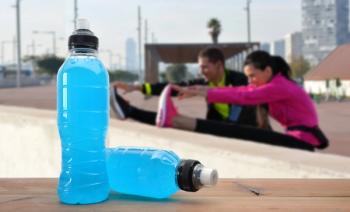
- Application Notebook-02-01-2014
- Volume 0
- Issue 0
Analysis of Additive Elements in Polymer Using ZSX Primus Series/Application Package
This application note introduces an Application Package for quantitative analysis of additive elements in polymer.
This application note introduces an Application Package for quantitative analysis of additive elements in polymer. The Application Package includes calibration standards and drift correction samples required for the quantitative analysis, the step-by-step instruction manual, and more. This polymer Application Package makes it easy to set up the quantitative analysis application by the use of polyethylene disk specimens as calibration standards.
Instrument
The polymer Application Package is applicable to Rigaku sequential wavelength-dispersive XRF spec-trometer, ZSX Primus, ZSX PrimusII, and ZSX Pri-musIII+. For Mg, Na, and F analysis, an optional high-sensitivity crystal RX35 is required. In addition, an optional Ge crystal is needed for the ZSX PrimusIII+. The analysis area is 30 mm in diameter.
Table I: Analysis element and calibration range
Analysis Component and Calibration Range
Table I lists the analysis components (elements) and their calibration ranges of this Application Package.
Table II: Measurement condition
Contents of this Application Package
The measurement conditions shown in Table II, standard values of six set-up standard samples, various correction coefficients and conditions of two drift correction samples are automatically set by running the installation CD. After the installation, the instruction manual provides simple, step-by-step instructions on how to set up quantitative application, which enables less-experienced users to generate accurate calibration curves. Figure 1 shows the outline of this Application Package.
Figure 1: Outline of polymer Application Package.
Sample Preparation
Before measurement, the analysis surface of each sample is polished using sand paper and then cleaned with ethanol.
Figure 2: Calibration curves and their accuracies for typical elements.
Calibration
Calibration curves and their accuracies for typical elements are shown in Figure 2.
The Rigaku ZSX Primus series of sequential wavelength dispersive X-ray fluorescence spectrometers.
The accuracy of calibration is calculated by the following formula,
Ci : calculated value of standard sample
Ĉi : reference value of standard sample
n : number of standard samples
m : degree of freedom
Repeatability Test
Table III shows the test results of 5-time measurements with sample preparation on the ZSX PrimusII.
Table III: Repeatability test result
Conclusion
Polymer Application Package, introduced in this application note, makes it possible to easily set up calibration for additive elements in polyethylene-base samples. This Application Package is effective to analysis of polymers similar in composition to polyethylene.
Rigaku Corporation
9009 New Trails Drive, The Woodlands, TX 77381
tel. (281) 362-2300, fax (281) 364-3628
Website:
Articles in this issue
almost 12 years ago
The Use of Raman Spectroscopy in Cancer Diagnosticsalmost 12 years ago
Highest Spectral and Spatial Resolution for Chemical Imagingalmost 12 years ago
Savillex C400d: A New General Purpose, Inert Nebulizer for ICP-MSalmost 12 years ago
Trends in Infrared Spectroscopic Imagingalmost 12 years ago
Investigating Polymer Orientation with FTIR-ATRalmost 12 years ago
Single Reaction Chamber Microwave Digestion of Highly Organic MatricesNewsletter
Get essential updates on the latest spectroscopy technologies, regulatory standards, and best practices—subscribe today to Spectroscopy.
